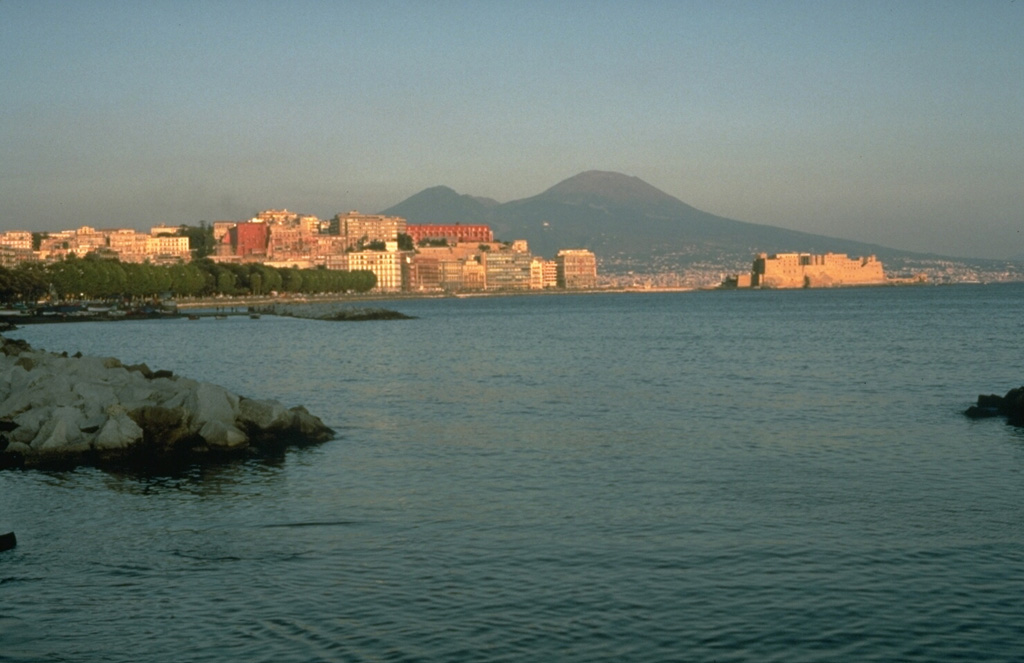Global Volcanism Program | Vesuvius
One of the world's most noted volcanoes, Vesuvius (Vesuvio) forms a dramatic backdrop to the Bay of Naples. The active cone was constructed within a large caldera of the older Monte Somma edifice, thought to have formed incrementally beginning about 17,000 years ago. The Monte Somma caldera wall has channeled lava flows and pyroclastic flows primarily to the south and west. Eight major explosive eruptions have taken place in the last 17,000 years, often accompanied by large pyroclastic flows ...| Smithsonian Institution | Global Volcanism Program

